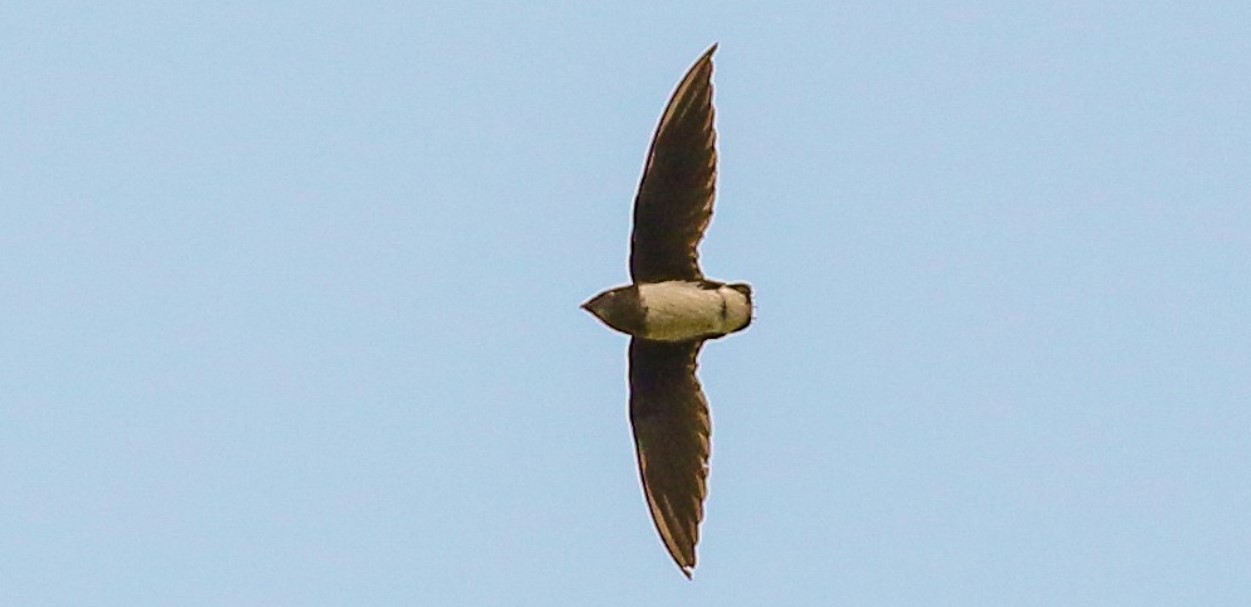
Cassin’s and Sabine’s Spinetails in Uganda
Cassin’s and Sabine’s Spinetails in Uganda: Uganda, sometimes called the Pearl of Africa, is a naturalist’s and birdwatcher’s paradise. Two exceptional species of swifts, Cassin’s Spinetail (Neafrapus cassini) and Sabine’s Spinetail (Rhaphidura sabini), are among its great biodiversity. For those fortunate enough to see them in their native habitat, these birds are a sight to behold and a tribute to the biological bounty of the nation.
The characteristic swift of the lowland forests, Cassin’s Spinetail, is distinguished by its broad, straight wings that appear “pinched” at the body and almost tailless appearance. It is easily recognised by its distinctive pattern: a narrow white band on the rump, a white belly, a white vent, and a black throat, wings, and back. The mystery surrounding this bird’s vocalisations and nesting practices only heightens its attractiveness.
The Cassin’s Spinetail is a swift with a distinct set of behavioural traits. This bird has a striking, forward-heavy profile due to its practically tailless appearance and wings that appear “pinched” at the torso. Its shape and structure point to adaptations for quick flying in dense forests. The species’ lack of migration suggests that it has adapted well to its current environment. It is also said to be rare over the majority of its range, which could be because of ecological causes or particular requirements for habitat.
However, Sabine’s Spinetail is easily identified by its square tail and protruding wings. It is found across the African tropical rainforest, including Uganda. Its comparison with Cassin is made clear by the blackish wings, back, and throat, as well as the white belly, tail, and rump. Its tail is longer than its wings, giving it a rapid appearance and its tweet is a distinctive feature of the species.
Known for its distinctive flight style, the Sabine’s Spinetail is an intriguing bird species that may be found across Africa, including Uganda. These birds are distinguished from other birds in the sky by their distinctive silhouettes created by their square tails and protruding wings, which are pinched at the belly and broadest in the centre. They have a white belly, tail, and rump that contrast with their blackish wings, back and throat. They have a high-pitched twittering call that is frequently audible when they are flying. Because they do not migrate, Sabine’s Spinetails are a permanent fixture in the wetlands and lowland forests that are their home. Their amazing airborne dexterity allows them to feast on insects in midair, which benefits the ecosystem. There is a steady population trend for this species in Uganda and other areas, as indicated by its current Least Concern listing.
In Uganda’s many ecosystems, which include protected places like the Budongo Forest, both species flourish. In addition to being well-known for its primate population, this park is also home to 370 different bird species, making it an ideal location for birdwatching excursions.
The fact that Cassin’s and Sabine’s Spinetails can be found in Uganda emphasises how crucial it is to carry out conservation work to save these species and their environments. They are essential to the ecosystem as swifts, especially in terms of managing insect populations. Their ability to survive depends on the condition of the forest ecosystems they live in.
The easiest way to see these swifts is to join a local birdwatching group or hire a knowledgeable guide from Journeys Uganda who can show you where the hotspots are and where they are known to soar. Immersion in the natural beauty and diversity of Uganda’s landscapes is a more meaningful experience than simply observing the swifts in flight.
More than just birds, Cassin’s and Sabine’s Spinetails in Uganda serve as emblems of Uganda’s abundant bird life. They serve as a reminder of the complex relationships that exist within ecosystems and the constant need to preserve these settings for the enjoyment of future generations. The hunt for these swifts in Uganda’s skies is bound to be an amazing experience, regardless of your level of experience with birds or travelling.
What are the best places to see Cassin’s and Sabine’s Spinetails in Uganda?
The ideal location to look for the elusive Cassin’s Spinetail in Uganda is the Budongo Forest, with the Royal Mile in particular. This forested sanctuary, which is well-known as the centre of Ugandan birdwatching, is home to a wide variety of species, including the Cassin’s Spinetail. The Mabira Forest is another noteworthy location. It provides a home for a variety of birds, including the Cassin’s Spinetail. With over 315 different bird species and a habitat for the Sabine’s Spinetail, Mabira Forest is a great option for those looking for this species. Mature forests between 700 and 2000 meters in elevation can be home to Sabine’s Spinetail in western and southern Uganda. These places provide an immersive experience in Uganda’s rich biodiversity and breathtaking natural settings, in addition to the opportunity to see these uncommon birds. For a fulfilling birding experience, birdwatchers are encouraged to visit these locations.
